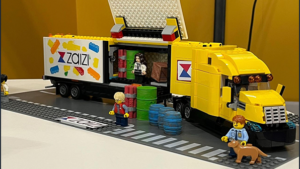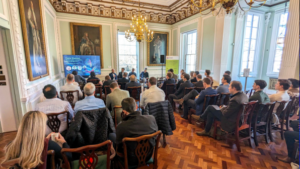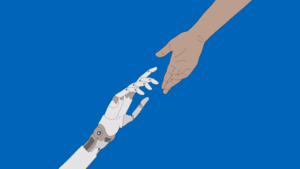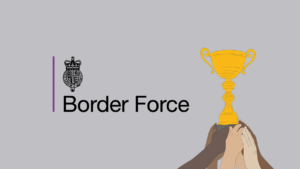
Mission-driven government: Your mission, should you choose to accept it…
Mastered by the Prussians in the 19th century, ‘mission command’ is a well-known military doctrine that encourages soldiers to use their own initiative in battle.
Senior commanders provide a clear objective and leave it to the soldiers to understand how to achieve it in a particular time frame. This decentralisation gives soldiers greater flexibility and independence to make decisions quickly, without the need to wait for direction from central commanders. And that autonomy helps the battalion make better decisions and react faster, giving them an edge over opponents.
The ‘missions’ approach empowers a team, giving everyone a collective sense of purpose and facilitates better collaboration. This thinking isn’t just exclusive to the military — a similar approach is used by many modern organisations to realise the potential of their digital delivery teams.
The likes of Spotify, the NCSC and GDS, are using similar mission-driven development styles to unshackle their teams and instigate a real cultural change. We work with and help our clients to operate in this way too.
The definition of a mission
A mission is a goal a multidisciplinary team looks to achieve in a set period. It’s often a short, concise statement that’s given to the team to investigate.
The team works with users to define the problems and iterate potential solutions to help achieve the goal. And everyone is clear on how the mission supports the organisation’s overall strategy and roadmap.
The team also clearly articulates the measures of success and clarifies what ‘done’ is. This helps show the value delivered by the mission.
What are the benefits of a missions approach in government?
Empowers and motivates the team
The multidisciplinary team takes ownership of investigating the problems to find out the best way to solve it. The team is in a better position — than, for example, senior management — to decide and prioritise what work to do as they have day-to-day involvement in the mission.
As the team takes the lead, it moves away from the treadmill of building features. It has the authority to push back on unplanned requests from senior managers. This autonomy unlocks the team’s potential, making them motivated and proactive.
Since the team has more responsibilities, it’s their duty to provide regular updates and show-and-tells. This transparency ensures stakeholders and seniors have visibility, and trust, in the work the team undertakes.
Better solutions
The team takes part collectively in the discovery and delivery of a mission, and that helps produce better results. Everybody investigates and understands what is needed. For example, the developers participate in the user research and therefore better understand the problems for themselves.
The team doesn’t start with any assumptions or solutions. It’s guided by user research and evidence, iterating ideas that address the underlying problem. The different perspectives foster innovation and help create comprehensive and realistic solutions.
Quicker results
Although the scope of the mission is fluid, the length is capped. This provides a checkpoint to reassess the value of the work and see if it needs to continue, stop or change course (our missions are 12 weeks long).
It also puts a stop to never-ending flexible deadlines. Progress on missions is expected during the timeframe so value is continually delivered. The team uses its time optimally and everyone has a sense of satisfaction once an outcome has been achieved at the end of the mission.
Metrics
Working on a mission isn’t about output or volume, it’s about achieving the goal of the mission. And since the goal is measurable, it’s easier to see what impact the team is having. Teams can show, with numbers, what they have achieved in the period.
How we helped a public sector client work in missions
We created a roadmap for this client based on its organisational objectives. We identified outcomes in the roadmap and helped deliver missions that would help achieve those outcomes.
Empowering the team was a key reason for this public sector organisation to work in missions. It wanted to move away from building a laundry list of features from a backlog. Instead, it wanted the team — those with day-to-day involvement in the product — to decide the best way to solve problems and achieve the organisation’s outcomes.
The Covid-19 pandemic has changed the way we live our lives and work. And as user researchers, where meeting and observing users is integral to the role, we’ve had to adapt.
Even though we’re working remotely with users, our purpose remains the same — to champion users’ needs and see how technology can best help them to achieve their goals.
For public sector organisations, investing in the right digital solutions matters now more than ever. And we’re helping these organisations take a user-centred approach to creating and iterating their digital services.
How can your team work this way?
If you want your delivery team to work in this way, think about the following:
- Missions should deliver on an outcome that is clearly aligned to business objectives. A roadmap can help with that.
- Set a target of delivering an outcome that solves a problem in a set period — 12 weeks works for us. If you can’t deliver something in that period of time, you’re probably not thinking about it correctly.
- Track the progress of your missions with metrics
- Communicate with stakeholders and seniors and build trust in how this works. You’ll need their buy-in and support for it to work seamlessly.
Related content
-

From ScanApp to Lego demos — What you need to know about Security & Policing 2025
-

Truth, trust and transformation — 4 key takeaways from Zaizi’s AI in government event
-

Paris AI summit: Navigating the AI landscape and how SMEs can help UK government
-

Border Force wins Global Customs Innovation Award for ScanApp — a solution Zaizi helped build
